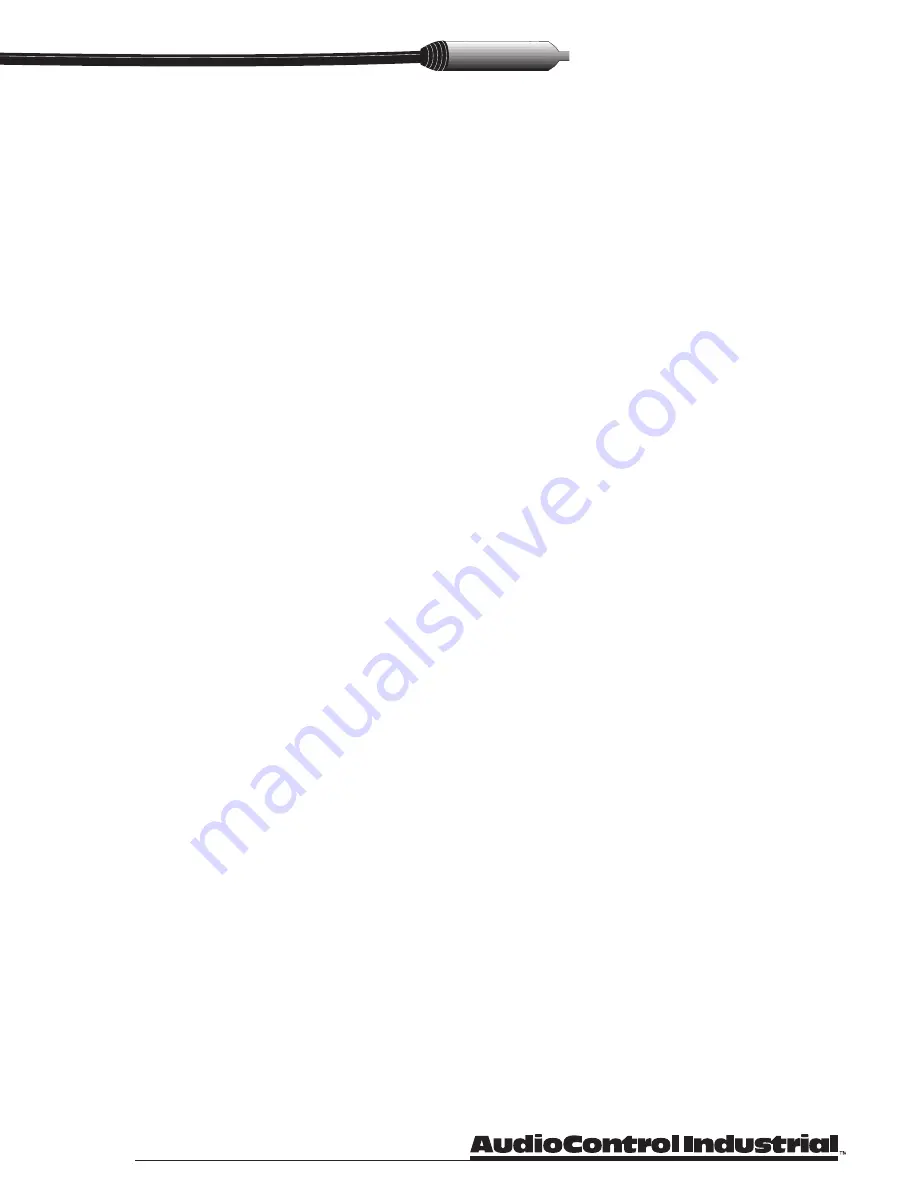
9. Listening Test
When equalization of the system is complete, let your ears be the judge. If something doesn’t sound right,
go ahead and tweak the equalizer controls to your taste.
References
1. F. J. Ampel, “Home Theater Acoustical Problems and Equalization Solutions,”
AudioControl Technical Paper #108
2. Home THX Audio System Room Equalization Manual, Revision 1.5, Lucasfilm Ltd.
Sound System Equalization
Equalizing a large sound system isn't much different from equalizing a stereo system. Granted, the scale
of things is quite different, but the process is more or less the same.
One thing that you need to keep in mind when equalizing a system in a large space is that the equalized
response curve represents the average response taken at many points within the room. This alone can
make the equalization process quite tricky. The aiming of the components of the array, their mechanical
alignment, and their directional characteristics all contribute. It’s easy to make the system curve look right
at one point, but how about the other seats in the room?
One source of problems is picking a microphone position that is too close to the loudspeakers. If the
loudspeaker has flat power response throughout its coverage pattern, then you are safe. If not, then what
happens is that you end up equalizing the direct field response, which is fine at that location but since the
power response isn't flat, you get a lumpy response curve at other locations. On the other hand, if you
equalize outside of the direct field (in the reverberant field) and successfully flatten things out then the
direct field will be lumpy. The solution is constant coverage loudspeakers that maintain their directional
characteristics over a wide frequency range.
Monitor Speaker Equalization
Monitors in this context are the monitors used in a recording studio for monitoring and evaluating the
program being recorded. Equalization in this context is especially critical because any response aberration
in the control room monitor speakers has an inverse relationship on the material being monitored once the
material is removed from the room and played on other equipment.
Consider: Your playback system has a midrange bump in it around 3kHz, and a fairly flat high-end.
You’re mixing some material down using these speakers as a reference. When the producer takes the
material out of the studio and listens to it that night at home, he notes that the vocals didn't seem quite as
present as they were at the studio and that the drums seem a bit lifeless.
What has happened is that the 3k bump caused you pull the vocals down in the mix (since most vocal
energy is around 3k) and the flat high-end resulted in not having enough treble energy content in the final
mix. This occurs partially from a level judgment error (too much top end in the monitors, not enough on
tape) and perhaps from an equalization error (it sounded fine in the monitors, why EQ it?).
If the speakers have a bass bump, then your end-product could be bass shy. As you can see, the speakers
really do have an inverse effect on your end-product.
Careful equalization of your monitor system using the SA-3051/SA-3052 and a good equalizer can give
your studio the ability to make tapes that sound good anywhere. The process and pitfalls are very similar
to equalizing a home hi-fi system. Additionally you should be aware of the following:
• Your microphone positions should be approximately where the engineer sits, at approximately head
level. It's not a bad idea to use several positions at approximately ear level, but along the length of the
console. Make sure that the response at the producer's chair is very similar to that at the engineer's
chair.
• Make the overall response curve smooth rather than flat.
• Add some controlled rolloff at the high frequencies to compensate for the rolled-off high-frequency
response of most home systems.
• Pay attention to the response in the midrange of the audio spectrum, between 300 Hz and 5KHz. Make
sure that it is smooth and reasonably flat.
5-4












































